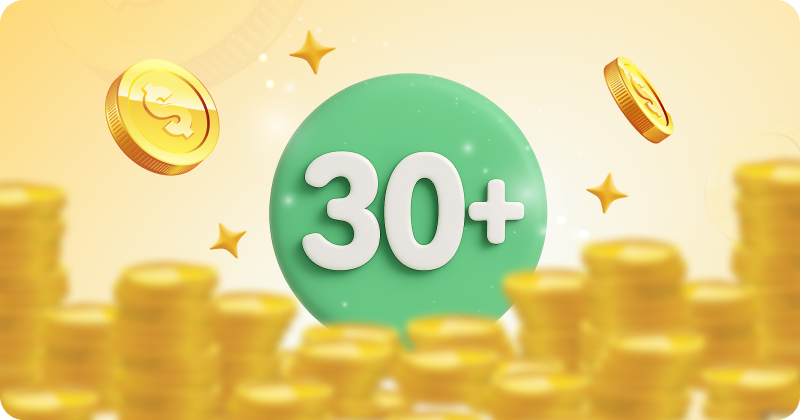
Side hustles have become a backup plan as well as a bonus. When bills keep climbing and your 9-to-5 falls short, extra income becomes both helpful and essential. In fact, only 27% of U.S. adults report having a side hustle in 2025, the lowest rate since 2017, down from 36% just a year earlier. That dip shows that the people sticking with hustles are seeking realistic, worthwhile ideas.
That’s exactly what this list is about. Whether you’re cramming between classes, juggling family stuff, or squeezing a little more out of your evenings, picking up a legit side hustle can help.
This guide walks through over 30 solid ideas to earn extra money in 2025. These aren’t wild promises, just steady and achievable ways to earn online, from home, or during your off-hours. No expensive equipment. No special training. All you need is some time and motivation.
Taking paid surveys might just be one of the simplest side hustles you can do from your phone. Brands want feedback on products, ads, and experiences, and they’re willing to pay for it. You won’t be quitting your job, but if you’re looking to make a few extra bucks in your free time, this is a good one.
With BrandBee, you can complete unlimited surveys every day and cash out fast. As soon as you hit $3, you can redeem your earnings for PayPal money, Venmo cash, or free gift cards. No long waits. No complicated steps. It’s direct and quick, and faster than most of the big-name competitors. And yes, BrandBee is legit. Millions already earned.

Other legit survey sites: Swagbucks, InboxDollars, Survey Junkie. They’re all reliable, but many have longer payout cycles or higher minimums.
Best for: Anyone with downtime during commutes, breaks, or late-night scrolling. Especially helpful for students or casual earners who just want to get paid for their opinion.
Brands don’t want to launch a broken app or a confusing website. That’s where testers come in. Your job? Use their stuff. Speak your thoughts. Point out the bugs.
Platforms like UserTesting pay around $10 for a 20-minute test. TryMyUI offers up to $20 per session. If you're short on time, UserCrowd gives you quick tasks; no talking needed.
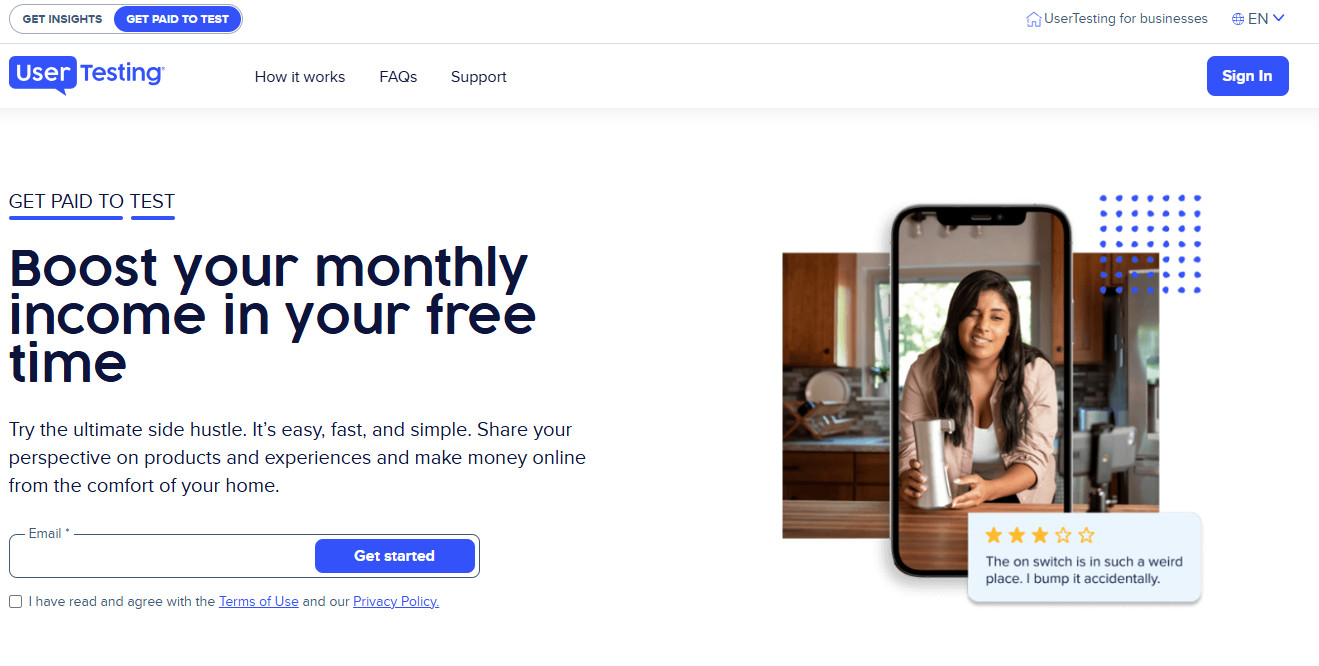
Most of the time, you’ll record your screen and talk out loud as you walk through the app or website. Companies want to hear what’s confusing, what’s working, and what makes you pause.
Best for: People comfortable with tech. If you’ve got a clear speaking voice, internet access, and a phone or laptop, you’re good to go.
Yes, you can actually get paid to play games. If you’re already logging hours on your phone, this might be one of the more fun ways to earn money. Some apps reward you for reaching milestones. Others pay just for showing up daily.
On BrandBee: The Play & Earn feature lets you earn real rewards just by playing. Whether you’re hitting level goals or casually grinding, the points keep coming. Redemptions happen fast, usually within 24 hours. No waiting weeks like you do with other platforms.
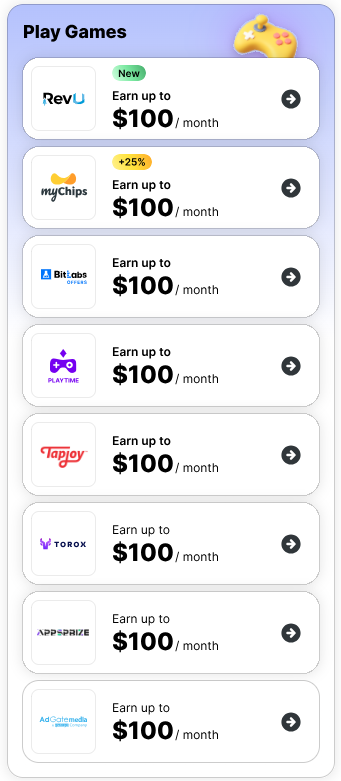
Other options: Mistplay is solid for Android gamers. Rewarded Play is another one to try. But BrandBee often wins on payout speed and variety.
Best for: Anyone looking for a chill, fun way to make screen time pay for itself, especially younger users who already game.
Buying groceries? Ordering online? You might as well get something back for it. Cashback apps make that possible. You buy what you normally would, and a small percentage comes right back to you.
With BrandBee, the cashback feature connects with major retailers like Amazon, Target, Walmart, and more. Groceries, clothes, home goods... it all counts. And if you’re making repeat purchases or grabbing bigger-ticket items, the rewards add up.
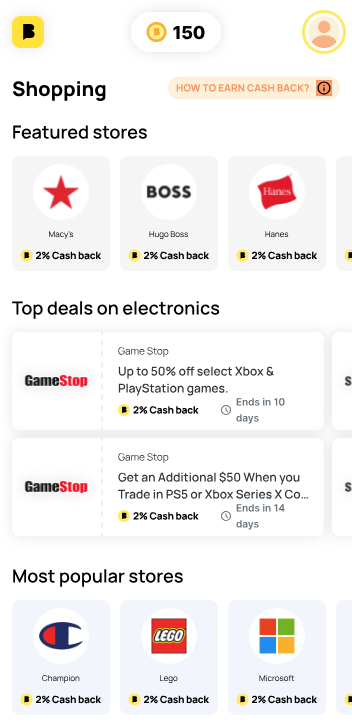
Other names you might know: Rakuten (great for big seasonal promos), Ibotta (strong focus on grocery items). Both are solid, but BrandBee has the edge with faster cash-outs.
Best for: Everyday shoppers who like scoring deals without having to dig for them. If you’re already buying it, why not earn something back?
Short on time but want to squeeze in some earnings? Microtasks might be the move. These are quick, small jobs (think tagging images, basic data entry, or identifying product categories).
Sites like Clickworker and TaskMate let you pick up tasks when you’ve got a few minutes to spare. Payouts range from a few cents to a few dollars, but if you batch them, they add up.
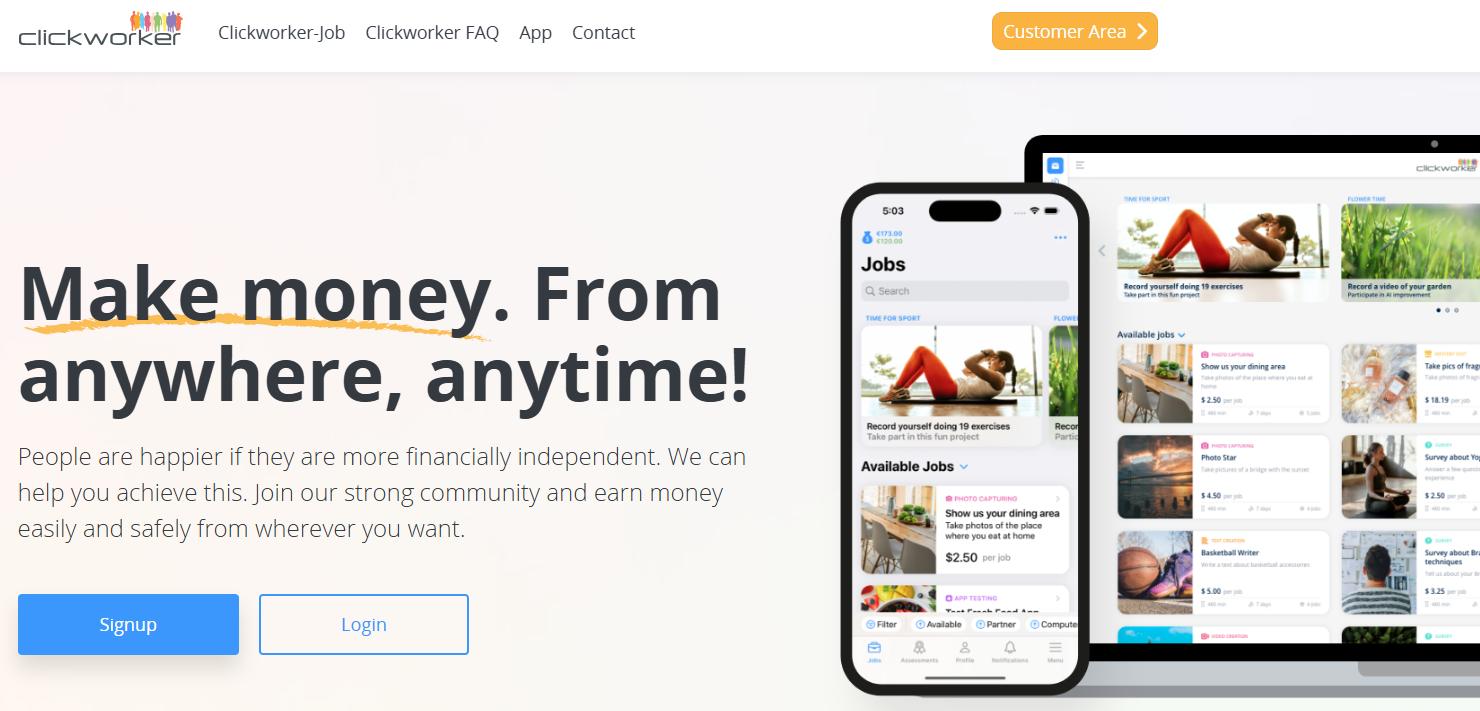
No major skills required. Just a little focus and consistency.
Best for: People who want low-pressure work they can do in short bursts: waiting in line, sitting on the bus, or between meetings.
If you’re a fast and accurate typist, transcription can be a steady gig. You’ll listen to audio or video, then type it out. Easy to start. Flexible hours. No fancy equipment needed.
Sites like Rev, TranscribeMe, and GoTranscript are well-known in this space. Most pay between $0.30 to $1.10 per audio minute. The faster and more accurate you are, the more you can make.
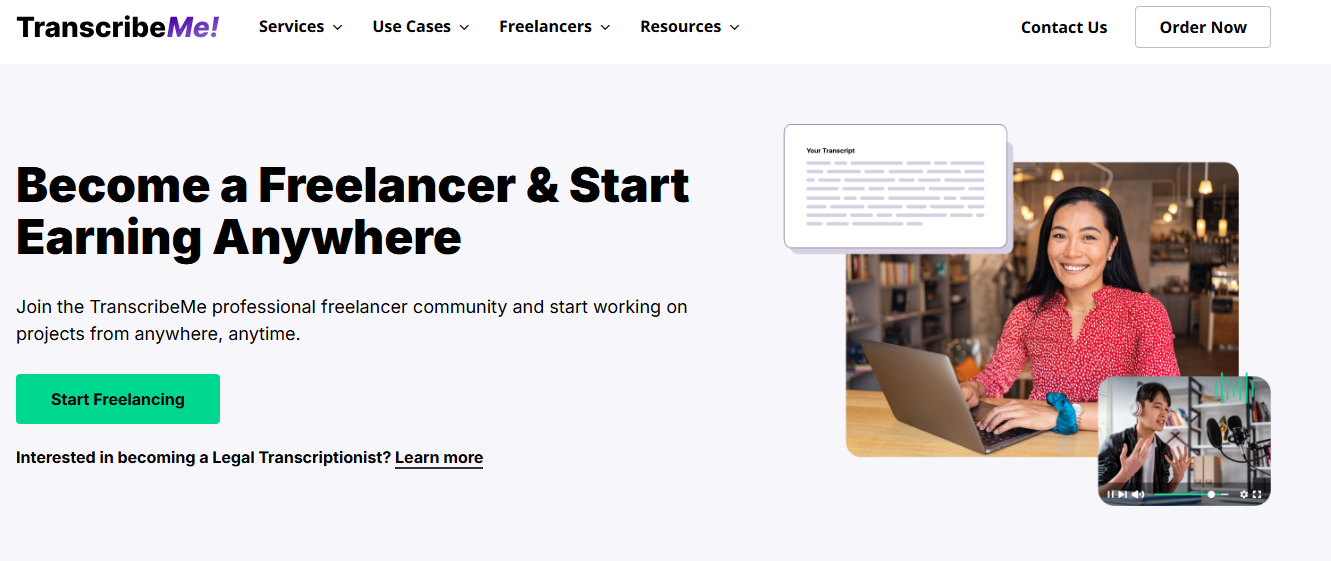
Bonus: Captioning videos for YouTube or TikTok creators is in high demand.
Best for: Parents, early-career freelancers, or anyone looking for consistent at-home work that doesn’t require much overhead.
Some apps pay just for being open in the background or for using the web as usual. You’re not doing anything extra, but you’re still earning.
Examples include:

It’s not high-paying, but it’s dead simple. Once it’s running, you don’t have to think about it.
Best for: Anyone who likes the idea of background earnings while they work, study, or stream.
Want to make something once and keep getting paid for it? That’s where digital products come in.
Think printable planners, budget templates, checklists, calendars, trackers; these are all in high demand. And the setup is simple: design your files, upload them to platforms like Etsy, Creative Market, or Gumroad, and get paid every time someone downloads one.
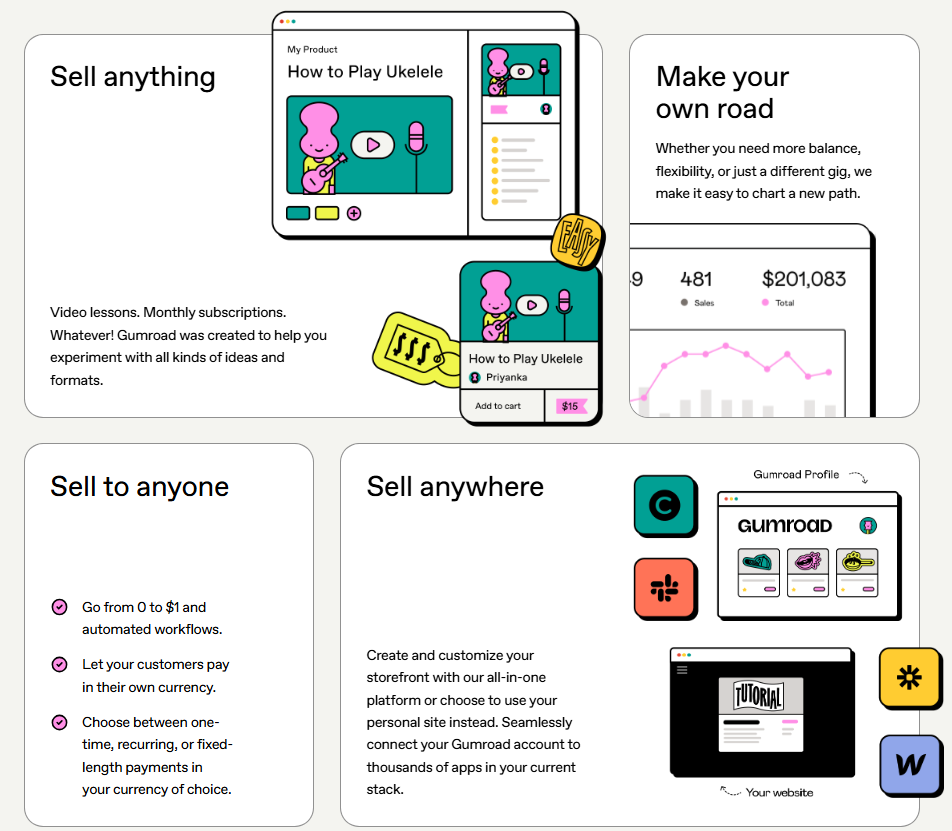
There’s no inventory. No shipping headaches. You don’t even need to be a design expert. A lot of sellers start with free tools like Canva. Once you’ve got a few listings up, you can earn semi-passively as your shop grows.
Sure, competition exists, but unique angles and niche ideas (like “meal planners for truck drivers” or “daily trackers for ADHD”) can help you stand out.
Best for: Creative types who want a side hustle with low overhead and repeat income.
If you’ve got advice to share or a story to tell, self-publishing might be for you. Platforms like Amazon KDP (Kindle Direct Publishing) let you upload an eBook for free and earn royalties of up to 70% on each sale.

No, you don’t have to write a full novel. In fact, short guides and how-to booklets often sell well, especially if you focus on a niche topic and write clearly. Think: “Budgeting for Freelancers” or “How to Train Your Rescue Dog.”
Promotion is important here. Use social media, Pinterest, or even a blog to spread the word. Over time, one good eBook can grow into a small catalog and a steady monthly payout.
Best for: Writers, storytellers, or anyone with specialized knowledge they can package into a digital format.
You don’t need a website developer or a five-step funnel to start blogging anymore. Platforms like Medium and Substack make it easy to share your voice and earn from it.
On Medium, you get paid based on how much time members spend reading your content. Substack lets you build a newsletter and charge for subscriptions. Some creators offer free posts and reserve premium content for paying subscribers. Others monetize through affiliate links or product promotions.

You won’t make money overnight, but with consistent posts and the right audience, this can snowball into something big. A lot of creators also cross-post to build reach.
Best for: People who like writing and want to build a personal brand while earning on their own schedule.
Got something to say or show? YouTube and TikTok are where creators turn content into income.
On YouTube, once you hit 1,000 subscribers and 4,000 watch hours, you can apply to the Partner Program and start earning from ads. TikTok has its own Creator Fund, plus options to partner with brands or use affiliate links.

If you’re into a niche (like plant care, language tips, or budget travel), you don’t need millions of followers to make money online. Micro-creators often land sponsorships and sell their own products, too.
You’ll need to post consistently and interact with your viewers, but the upside is solid once your channel grows.
Best for: Outgoing or creative people who are comfortable on camera and enjoy building an audience.
Have a teachable skill? Package it into a course that earns.
You can create a course once and sell it over and over again on sites like Teachable or Udemy. No need to be a teacher in real life, just someone who knows their stuff and can explain it clearly. Topics range from fitness routines and drawing basics to coding bootcamps and marketing strategies.
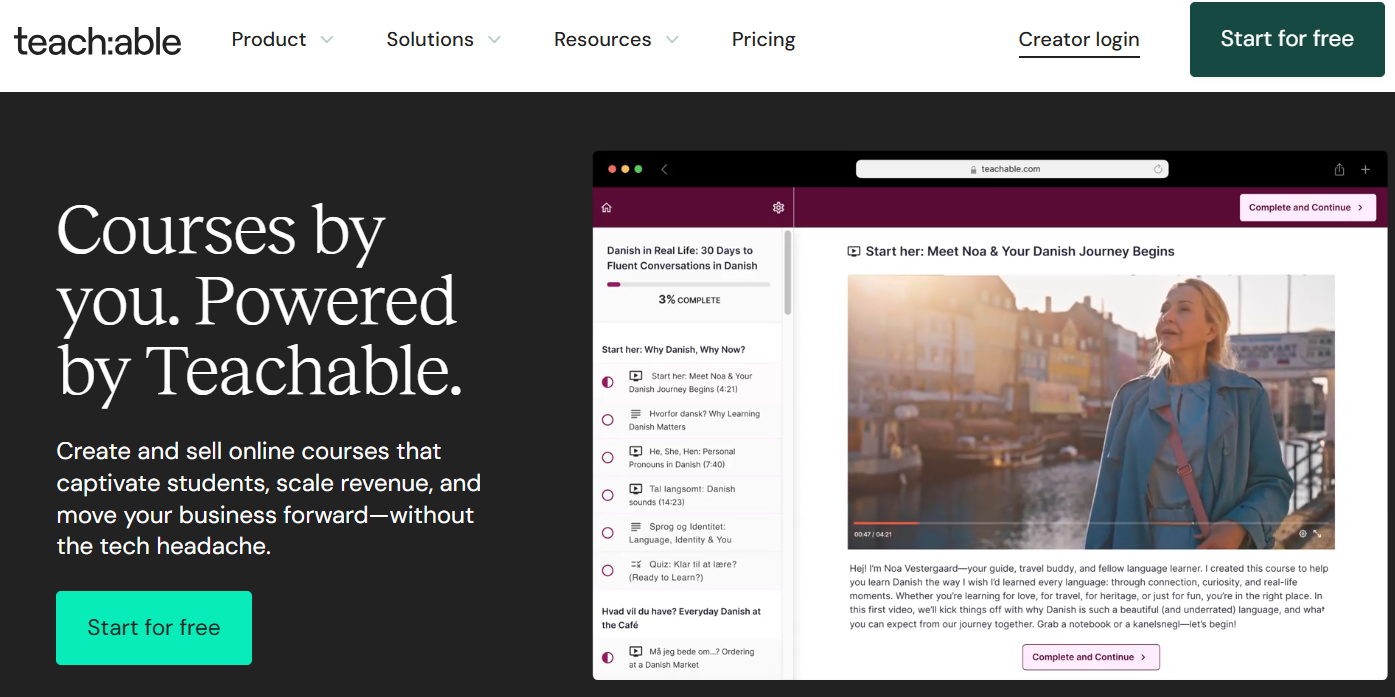
Courses can be priced anywhere from $20 to over $200, depending on content and demand. Some people create short “mini courses” while others build out full multi-module programs. A little promotion on social media, LinkedIn, or a blog can go a long way.
Best for: Professionals or hobbyists who can teach a skill in a structured and engaging way.
Yes, your grocery receipt can be worth money.
Apps like BrandBee, Fetch, and Ibotta let you scan receipts for money from everyday purchases and earn points or cashback. It’s quick, free, and surprisingly satisfying.
BrandBee highlight: Their Magic Receipts feature is one of the easiest ways to earn. Just snap a pic of your receipt (approval usually comes within 24 to 48 hours), and the Rewards land right in your account. You can redeem for PayPal cash or gift cards starting at just $3.
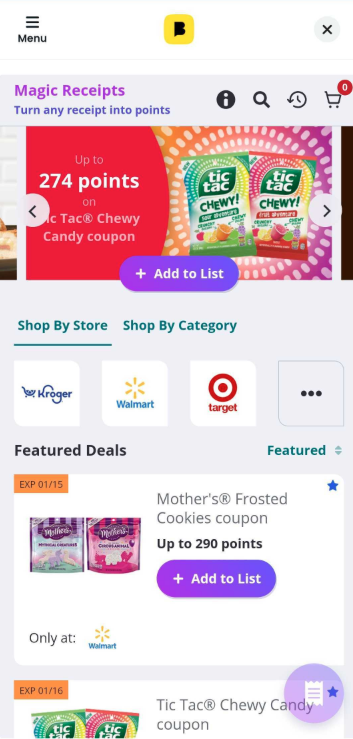
Other money-making apps might have longer payout times or higher cash-out minimums. If you want something simpler and faster, BrandBee’s setup is more user-friendly.
Best for: Shoppers who don’t want to change their routine but still want to earn something from it.
Got a camera and an eye for detail? Selling stock photos or short videos can make your photography hobby pay you back.
Sites like Shutterstock, Adobe Stock, and iStock let you upload your content. When a business, marketer, or publisher licenses your photo, you get paid. Every time. You keep earning each time that image is downloaded.

Popular subjects include everyday scenes, remote work setups, food, fitness, and urban life. Consistency matters here: upload regularly, build a portfolio, and track which styles perform best.
Even smartphone photography can work if the quality’s high enough.
Best for: Photographers or creatives who already have media assets, or want to build a portfolio that pays them back over time.
People are always looking for fresh voices to narrate audiobooks, explainer videos, and product demos.
If you've got a clear, calm, or expressive voice, you can sign up on platforms like ACX (Amazon’s audiobook exchange), Fiverr, or Voices.com. Beginners often start with short gigs (think $50 to $150 per project). With experience, some voiceover artists earn hundreds or even thousands.
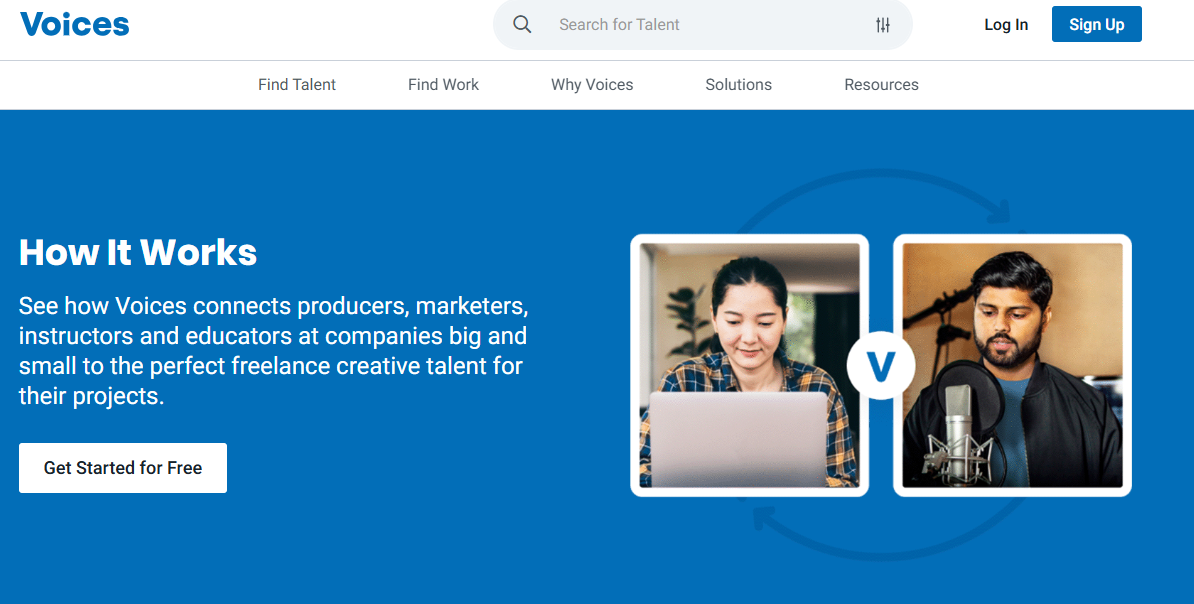
You’ll need a quiet room and a decent mic (USB condenser mics are fine to start). Basic audio editing skills help, too, but many clients handle that on their end.
If you enjoy reading out loud or performing, this is one of the more creative ways to earn from home.
Best for: People with confident voices and a bit of patience to record, edit, and polish audio files.
Jewelry. Candles. Artisanal crafts. If you’re already making things by hand, there’s a solid chance those hobbies can earn you real money. Platforms like Etsy help you get your creations in front of a global audience. Prefer something local? Craft fairs and pop-ups are still alive and well.
Most folks start with a small batch, just enough to see how people respond. As orders come in, you can scale. You’re selling products while earning from something you already love doing. And that makes the whole process feel less like work.
Best for: Anyone crafty who wants to make money from home doing something they already enjoy.
Print-on-demand is a favorite for low-risk creators. You make the design (shirts, mugs, tote bags) and sites like Printful, Printify, or TeeSpring take care of printing and shipping. No need to buy stock or figure out logistics.

You’ll hear this a lot: margins aren’t huge. But here’s the thing: if you can create niche or eye-catching designs, they sell. It’s also one of the easiest ways to test multiple products without ever holding inventory. Promote through Instagram, TikTok, or even your own site.
Best for: Digital artists or creative hobbyists who want a hands-off, legit side hustle.
Got an eye for a fixer-upper? Turning secondhand furniture into stylish resale pieces is a profitable side hustle if you’ve got the patience and the tools. Facebook Marketplace, Craigslist, and OfferUp are your go-to spots for both buying and selling.
Start small. Find cheap, neglected pieces at local thrift stores or garage sales. A bit of sanding, paint, or fabric can turn a $10 side table into a $150 statement piece. Some flippers niche down: vintage, mid-century, rustic. The payoff? Bigger margins and loyal buyers.
Best for: DIY lovers who enjoy working with their hands and flipping finds for serious profit.
If you’ve got artistic chops, there’s an audience willing to pay. Upload your work to sites like Society6 or Redbubble, and they’ll print, package, and ship your art as posters, pillows, or even phone cases. Or sell prints directly through Instagram or Shopify.
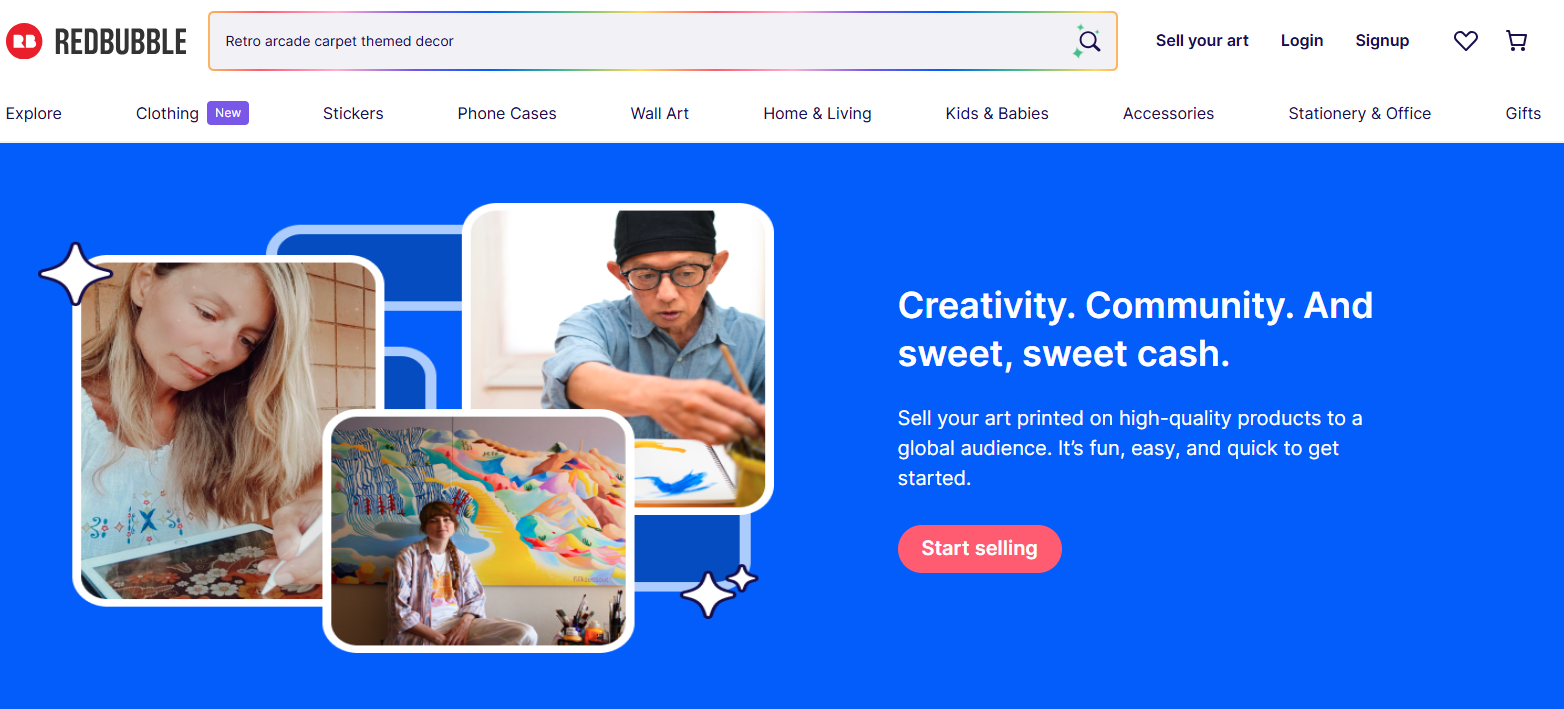
Originals can go for a higher price, but downloadable versions and smaller prints often move faster. Either way, you’re building a passive stream just by making your art available.
Best for: Artists who want a creative outlet that also brings in passive income.
Own a 3D printer? That’s already a step ahead. In 2025, printing on demand is one of the more niche (but growing) side hustles. Think cosplay props, tabletop miniatures, and custom parts. If it can be modeled, someone wants to buy it.
Sites like Etsy or niche forums are a good place to take commissions. And while printers aren’t cheap, many users make back the cost in just a few months. Especially if they tap into hobbyist markets.
Best for: Tech-savvy creators who want to earn directly from their gear.
Tutoring has always been one of the steadiest ways to earn extra cash. Platforms like Cambly, Preply, and Varsity Tutors connect you with students from around the world, and all you need is a webcam and a subject you’re comfortable with.

The usual suspects: English, math, science, and test prep. Rates range from $10 to $40 an hour, and you set your own hours. If you’re comfortable explaining things and working one-on-one, this is a side hustle that won’t waste your time.
Best for: Students, teachers, or anyone with expertise in a subject area.
Love animals? Apps like Rover and Wag make it incredibly easy to find pet owners who need a reliable walker or sitter. And no, this isn’t just walking a dog in the park. A 30-minute walk can bring in $15–$25. Overnight stays? Much more.
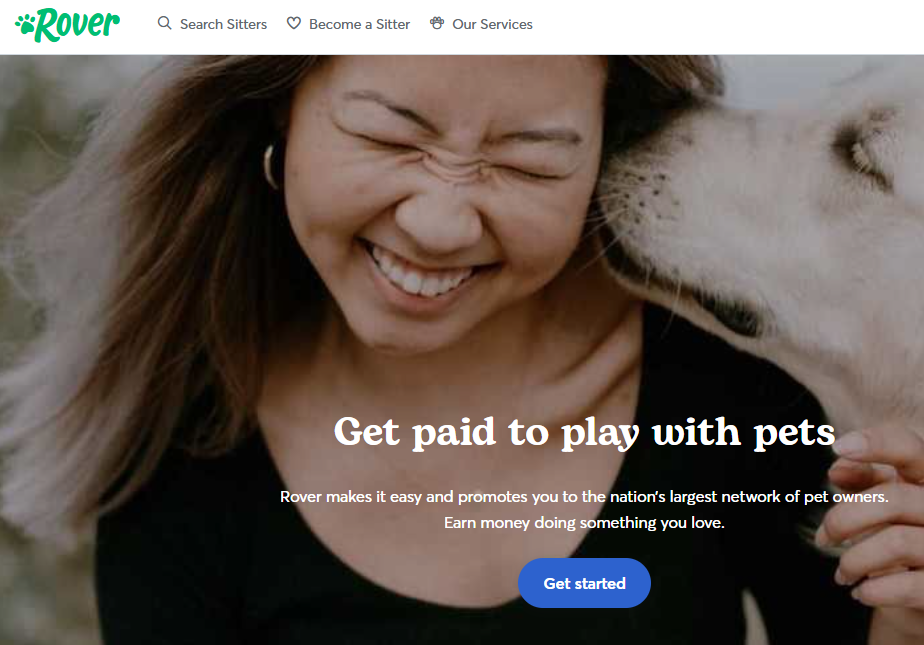
You can even build a client base in your neighborhood without the app cut. It’s flexible, it’s fun, and you get exercise out of it.
Best for: Animal lovers looking for side work that doesn’t feel like a job.
Still one of the all-time greats for earning on the side. Babysitting never went out of style, and platforms like Care.com make it easy to find families nearby. That said, most jobs still come from local word-of-mouth.
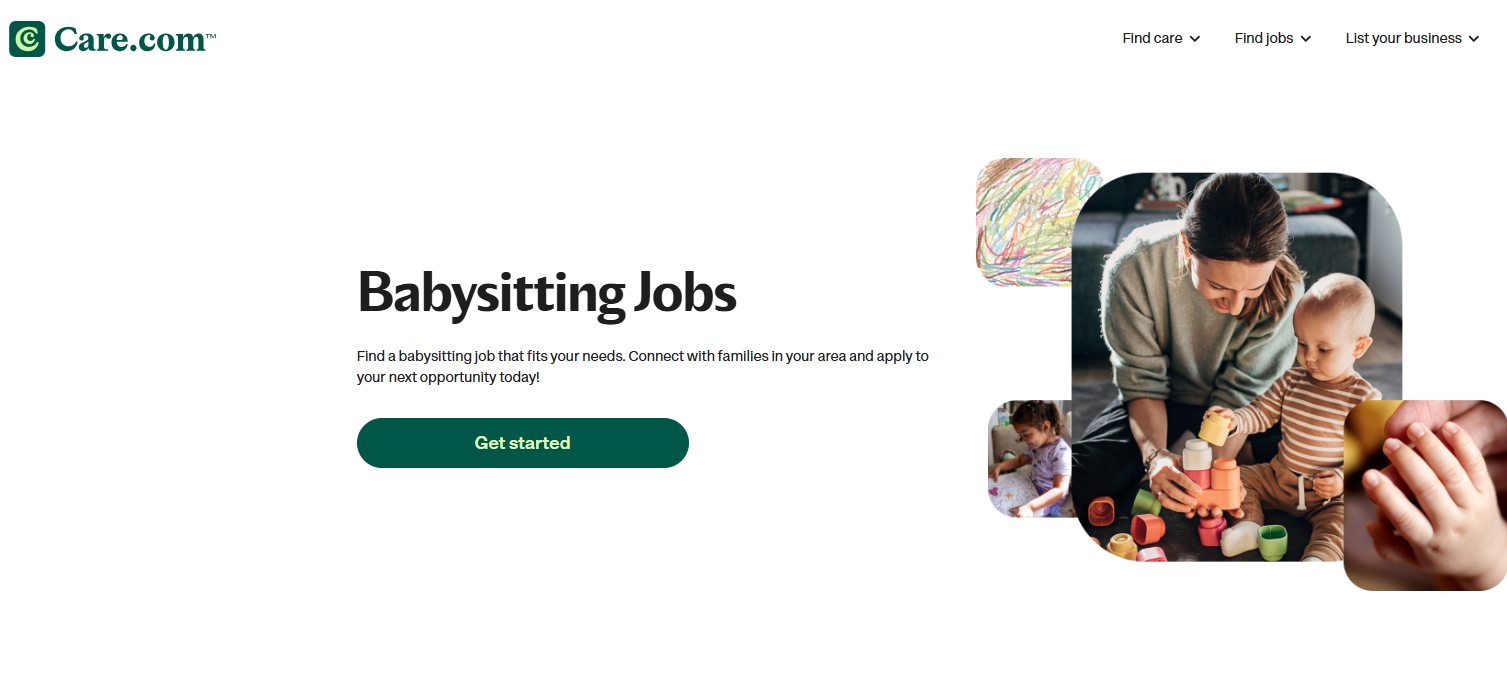
Pay can hit $25 an hour in some areas. Most gigs happen evenings or weekends, which makes this perfect for students or anyone with a flexible schedule.
Best for: Trustworthy and responsible folks who are good with kids.
People will pay good money for someone who knows how to clean, declutter, or organize their space. Sites like TaskRabbit and Thumbtack are good places to get started. Or just ask around your local community.
You don’t need to do deep cleans if that’s not your thing. Some clients just want a linen closet reorganized or a messy garage sorted. The pay? Often $25–$50 an hour, more if you bring your own supplies.
Best for: Organized people who like helping others get tidy.
If you’ve ever put together an IKEA bed without crying, you’re qualified. Handy? Good with tools? TaskRabbit and Handy let you offer services like fixing leaks, hanging shelves, or assembling furniture.

Pay depends on the job, but $50–$150 per task is normal. People want help, especially with things that seem small but take forever. You can pick your jobs and set your own schedule.
Best for: People who can fix things and want to get paid for it without becoming a full-time contractor.
Driving for Uber or Lyft might be one of the most talked-about side hustles out there, and for good reason. You can do it whenever you have time. Late nights, weekends, lunch rush... up to you.

Yes, gas and wear-and-tear cut into earnings. But some drivers still make solid cash by sticking to high-demand times like airport drop-offs or weekend nights.
Best for: People with a reliable car who like being on the road and setting their own hours.
Rather not have passengers? Delivery apps like DoorDash, Uber Eats, and Instacart are your answer. Grocery runs, takeout, small packages. You grab, you drop off, you get paid.

Tips help. So does knowing your local area. You don’t need to talk much (or at all), and it’s perfect for stacking on top of another job or filling weekend hours.
Best for: Drivers who want flexible side income without driving strangers around.
Own a home? Have an extra room? Airbnb can turn that space into hundreds (or thousands) of dollars a month. The same goes for Turo if you’ve got a car you’re not using every day.

It takes a bit of setup. Photos, listings, and cleaning in between guests or renters. But if you live in a tourist spot or a busy city, the earning potential is big.
Best for: People with underused assets who want to make extra income without extra effort.
Quirky & unique side hustles
Getting paid to shop sounds made-up, but it’s a real thing. Mystery shopping lets you earn a bit of cash (and often a free meal or item) just for acting like a regular customer and reporting on your experience. Companies want to know how well their staff treats people. You become their eyes and ears.
Sites like BestMark and IntelliShop post available gigs. One day, you’re rating the friendliness of a cashier. Another day, you’re judging how tidy the shelves look. Most assignments pay anywhere from a few bucks up to $25, and some reimburse what you buy.

You don’t need special skills, but you do need to pay attention. Did the employee greet you? Was the bathroom clean? You’ll usually fill out a short form afterward. That’s it.
Best for: People who like detail, and want an excuse to eat out or shop with perks.
If you’ve got opinions (who doesn’t?), focus groups can pay well for them. Some sessions are remote via Zoom. Others are in-person, like sitting in a room talking about packaging designs or app features.
Sites like Respondent.io list studies that pay between $100 and $250 for an hour or two of your time. Sometimes it’s just a video call where you share thoughts on a product or brand. Other times it’s a written questionnaire.

For those open to more intensive gigs, clinical trials run by universities or research hospitals can pay even more. These involve things like sleep studies, nutrition tracking, or experimental treatments. You’ll always be told the risks and requirements up front.
Not all studies are glamorous, but the pay can be worth it.
Best for: People who want high-paying, low-effort gigs without doing any selling, promoting, or long-term work.
Some side hustles come and go like clockwork. That’s the beauty of seasonal work: hit it hard, then chill.
Take holiday light installation, for example. From October to January, there’s strong demand. If you’re handy on a ladder and don’t mind cold fingers, this gig can bring in $500 to $2,000 for a few weekends of work. People want festive homes without the hassle.
Other ideas: gift wrapping, valet services, Easter bunny photos, or working at festivals. Signing up with local event staffing agencies can get you shifts at concerts, sports games, or street fairs. Sometimes you’ll get a text the night before: “Need 3 servers for a wedding.” If you’re available, you’re in.
It’s burst-style work, but fun and often well-paid.
Best for: Hustlers who like fast money sprints and aren’t looking for year-round commitments.
Live in a city with cool neighborhoods, history, or food? You can get paid for sharing your local knowledge by hosting tours.
Platforms like Airbnb Experiences and Showaround make it easy to list your own experience. No license or tourism degree required. People offer everything from haunted ghost walks to taco crawls to street art photo walks.

You set your rate (most charge $20–$50 per person) and choose your dates. Some hosts run weekend tours. Others go all-in and run them daily. Even better, you can design the kind of tour you’d actually want to take.
A friend made $300 in a weekend leading “Weird History of [City]” walks. He made laminated cards with fun facts. People loved it.
Best for: Outgoing folks who enjoy storytelling, walking around, and chatting with new people.
Sometimes, the weirdest hobbies make the best side hustles. Got a knack for rare houseplants? Know how to pour the perfect soy candle? These niche interests can bring in real income.
Take rare plant cuttings, for example. If you’re into monsteras or variegated alocasias, you know the market’s wild. A single cutting can sell for $300–$500 if it's healthy and rare.
Other examples:
Keep in mind: You’ll need a little startup time and basic tools. But once you’ve got your process, sales can start locally, then scale to Etsy, Instagram Shops, or even craft fairs.
It’s not instant income, but it’s satisfying, creative, and scalable.
Best for: Creators who want to turn an odd skill or craft into a part-time biz with real community.
Sure, side hustles can help cover bills or save for something fun, but they’re also about flexibility. Need a flexible way to bring in cash without quitting your job? That’s where side hustles come in.
The good news? You don’t have to become an influencer or launch a business overnight. Maybe you like helping kids with homework or walking dogs. Maybe you’d rather flip a thrift-store find or try a seasonal weekend gig. And if you’re more into low-effort options, some apps pay for surveys, games, or scanning your grocery receipt.
There’s no one-size-fits-all. Some people earn a few bucks while watching TV. Others build something bigger over time. A lot of side hustles don’t even need upfront investment. Just your phone, some time, and a bit of consistency.
If you want a simple, no-cost side hustle that you can start instantly, BrandBee combines surveys, gaming, cashback, and receipt scanning in one app. With over 500,000+ earners and $4M paid out in 2024, it’s one of the most accessible legit hustles around. Download the app today and start earning from your phone.
Absolutely. Even $5 here or $10 there adds up. Side gigs like tutoring, food delivery, or selling printables can cover everyday costs: groceries, gas, streaming subs. That extra cash might not change your life, but it can give your wallet some breathing room. Whether you're saving, paying bills, or just catching up, it counts.
Got 10–15 minutes? That’s enough. Quick wins like paid surveys, microtasks, or snapping receipts are easy to squeeze in. If you’re swamped, go for passive options like rewards extensions or cash-back apps. They run quietly in the background while you do… literally anything else.
Yes, but they take more time to build up. Freelancing, blogging, transcription, or launching an online product can pay well. YouTube or TikTok content can grow into solid income streams, too. These aren’t instant, but if you stick with them, they can turn into real paychecks.
Plenty. Freelance writing, tutoring, designing digital downloads, or voiceover gigs all work well from home. Platforms like Upwork, Voices.com, and Amazon KDP help you get started. BrandBee’s also great: quick tasks like surveys, games, and receipt scanning that you can do straight from your phone.
Stick to names you’ve heard of: Etsy, Airbnb, Rover, BrandBee. Skip anything asking for big upfront payments or “guaranteed” returns. Read reviews. Start small. The best side hustles lay it all out clearly: how you earn, how you get paid, and what’s expected.